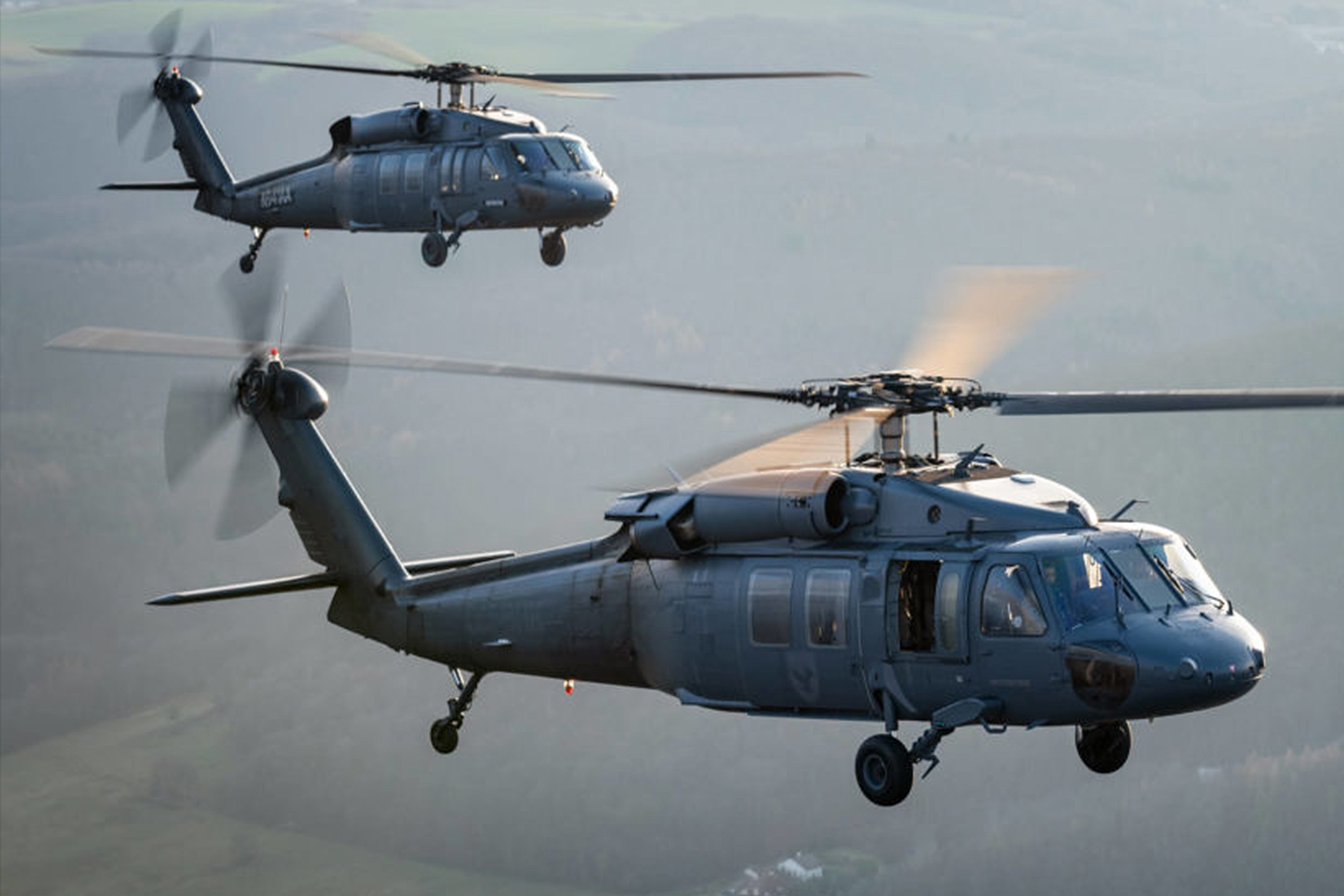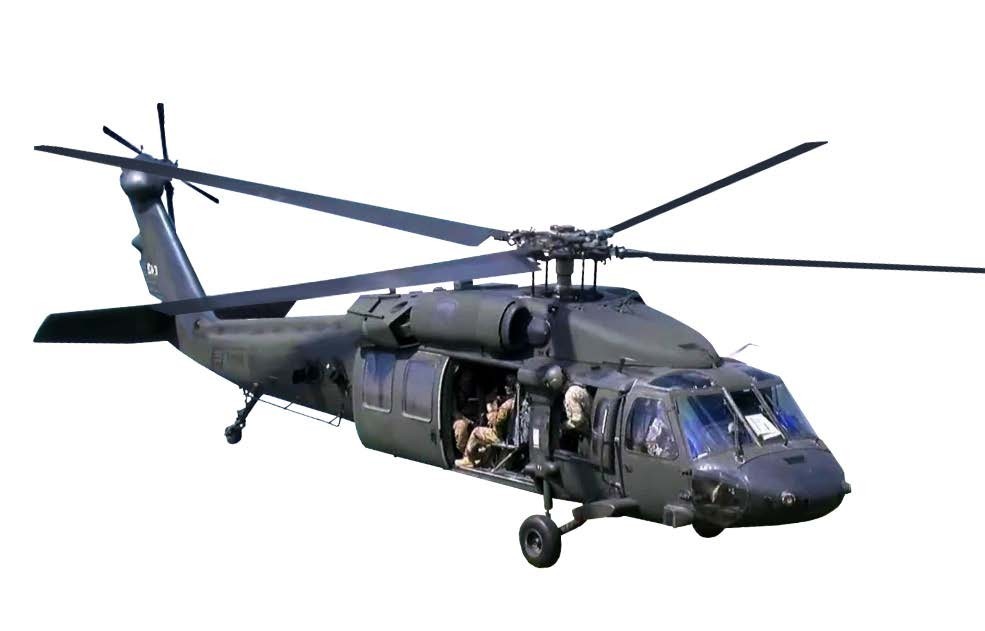Why the UH 60 Remains One of one of the most Reliable Helicopters in Service Today
Why the UH 60 Remains One of one of the most Reliable Helicopters in Service Today
Blog Article
UH-60: Technologies in Modern Helicopter Style
The UH-60 helicopter stands as a criteria in contemporary air travel, showcasing considerable developments in style and technology that provide to the progressing demands of army procedures. As we discover the advancement and essential developments of the UH-60, it becomes important to think about just how these advancements affect not only existing applications however also the future landscape of helicopter design.

Development of the UH-60
The advancement of the UH-60 Black Hawk helicopter stands for a significant turning point in aerospace engineering and armed forces air travel. Introduced in the late 1970s, the UH-60 was designed by Sikorsky Aircraft to satisfy the USA Army's requirement for a versatile utility helicopter with the ability of performing a variety of goals. Its design stressed resilience, speed, and maneuverability, setting new standards for operational performance.
The UH-60 features an unique four-blade rotor system, which improves lift and stability, permitting it to operate properly in diverse atmospheres. Its airframe is built from sophisticated composite materials, adding to a reduction in weight while maintaining structural stability. The helicopter's layout likewise incorporates better the rules of aerodynamics, which boosts gas efficiency and enhances variety.
Over the years, the Black Hawk has actually undertaken several upgrades to enhance its abilities, consisting of boosted engines, advanced flight control systems, and modular systems for simple upkeep and adaptability. The helicopter's capacity to carry out goals ranging from army transportation to medical discharge has actually solidified its duty as a foundation of U.S. army operations. The UH-60 Black Hawk stays an archetype of just how technology in helicopter design can considerably influence armed forces efficiency and operational flexibility.
Advanced Avionics Equipments
Developments in avionics systems have transformed the capacities of modern-day helicopters like the UH-60 Black Hawk, boosting functional effectiveness and situational understanding (UH 60). The assimilation of innovative avionics permits for enhanced interaction, flight, and navigating monitoring, making the UH-60 extra versatile in varied goal accounts
One of the crucial attributes is the innovative digital cockpit, which utilizes multifunction displays that offer real-time information, making certain pilots have immediate accessibility to essential flight info. This streamlining of info decreases pilot work and boosts decision-making procedures during facility operations. In addition, the unification of GPS and inertial navigating systems enables precise positioning and path planning, improving objective implementation in difficult environments.
In addition, advanced avionics systems improve interaction capabilities via protected data web links and voice interaction systems, permitting smooth sychronisation with ground pressures and various other aircraft. The combination of automated trip control systems better adds to boosted security and control, especially in adverse climate condition or during low-altitude maneuvers.
Engine and Efficiency Enhancements
Engine efficiency in modern-day helicopters has actually taken a substantial leap forward, driven by technologies that boost reliability, efficiency, and power. The UH-60 Black Hawk, for instance, utilizes the T700-GE-701C engine, which includes like this a dual-channel, full-authority electronic engine control system.
Moreover, the assimilation of engine health and wellness surveillance systems enables real-time diagnostics and anticipating upkeep, substantially enhancing functional integrity. These systems not only sharp teams to potential issues before they become critical but also facilitate much more efficient upkeep scheduling, thus minimizing downtime.

Materials and Structural Innovations
Current advancements in products and structural layout have reinvented contemporary helicopter building and construction, enhancing both performance and resilience. The intro of innovative composite products, such as carbon fiber enhanced polymers, has actually significantly decreased weight while keeping structural honesty. This change not just boosts fuel effectiveness but additionally increases haul capability, permitting helicopters like the UH-60 to execute even more varied goals.
Additionally, developments in aluminum alloys and titanium parts have added to improved resistance to deterioration and exhaustion, prolonging the life expectancy of important airframe components. The strategic use these materials has resulted in a reduction in maintenance requirements and improved general operational readiness.

Additionally, the assimilation of computer-aided design (CAD) and additive manufacturing innovations has enabled much more complicated geometries and lightweight frameworks, optimizing the wind resistant performance of helicopter styles. These developments promote fast prototyping and production, enabling producers to react quickly to advancing objective demands.
Safety and Survivability Features
Safety and survivability attributes in modern-day helicopter layout have come to be this hyperlink paramount, showing the enhancing needs for objective effectiveness in tough settings. The UH-60 Black Hawk, a notable instance, incorporates sophisticated innovations to enhance crew and guest defense. One of the most critical advancements is the unification of crashworthy fuel systems created to minimize the danger of fire throughout effect. Furthermore, the airframe is built with strengthened products that dissipate and take in energy, further safeguarding passengers in the event of a crash.
The helicopter additionally utilizes a ballistic protection system, which consists of armored staff seats and essential systems shielding, reducing susceptability to little arms fire and shrapnel. Improved situational recognition is attained via sophisticated avionics and sensor technologies, enabling pilots to detect and avoid hazards successfully.
Moreover, the combination of redundancy in vital systems-- such as double engines and multiple flight control channels-- makes sure continued operation even if one system falls short. The UH-60 is outfitted with sophisticated emergency situation flotation tools, enhancing survivability in water touchdowns. Collectively, these functions not just boost the safety of workers but additionally raise objective success rates in hostile settings, showing the commitment to excellence in helicopter layout.
Conclusion
The UH-60 helicopter represents a substantial development in modern-day air travel innovation, including ingenious products, sophisticated avionics, and durable safety attributes. Its advancement reflects a dedication to boosting performance and operational effectiveness while making certain pilot and team survivability. The combination of light-weight compounds and progressed navigation systems underscores the helicopter's flexibility in numerous armed forces objectives. On the whole, the UH-60 works as a benchmark for future developments in helicopter style, personifying resilience and versatility in modern military procedures.
The UH-60 helicopter stands as a benchmark in modern-day aviation, showcasing considerable developments in layout and technology that provide to the evolving needs of armed forces procedures. As we discover the evolution and essential innovations of the UH-60, it comes to be necessary to think about how these developments affect not just existing applications yet additionally the future landscape of helicopter layout.
Introduced in the late 1970s, the UH-60 was created by Sikorsky Aircraft to fulfill the United States Military's requirement for a flexible utility helicopter capable of performing a range web of missions. The UH-60 Black Hawk remains a prime example of how development in helicopter design can substantially influence army efficiency and operational adaptability.
On the whole, the UH-60 serves as a benchmark for future advancements in helicopter layout, personifying durability and flexibility in modern military operations.
Report this page